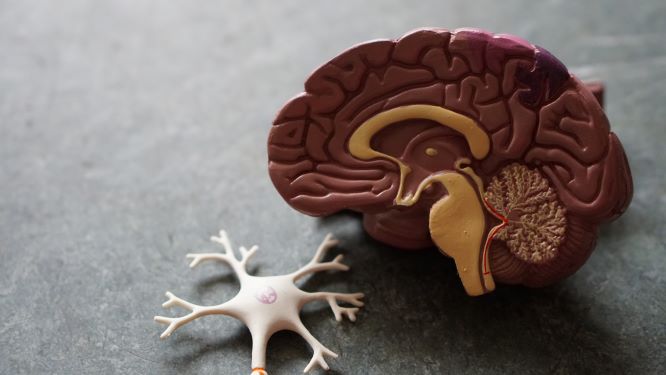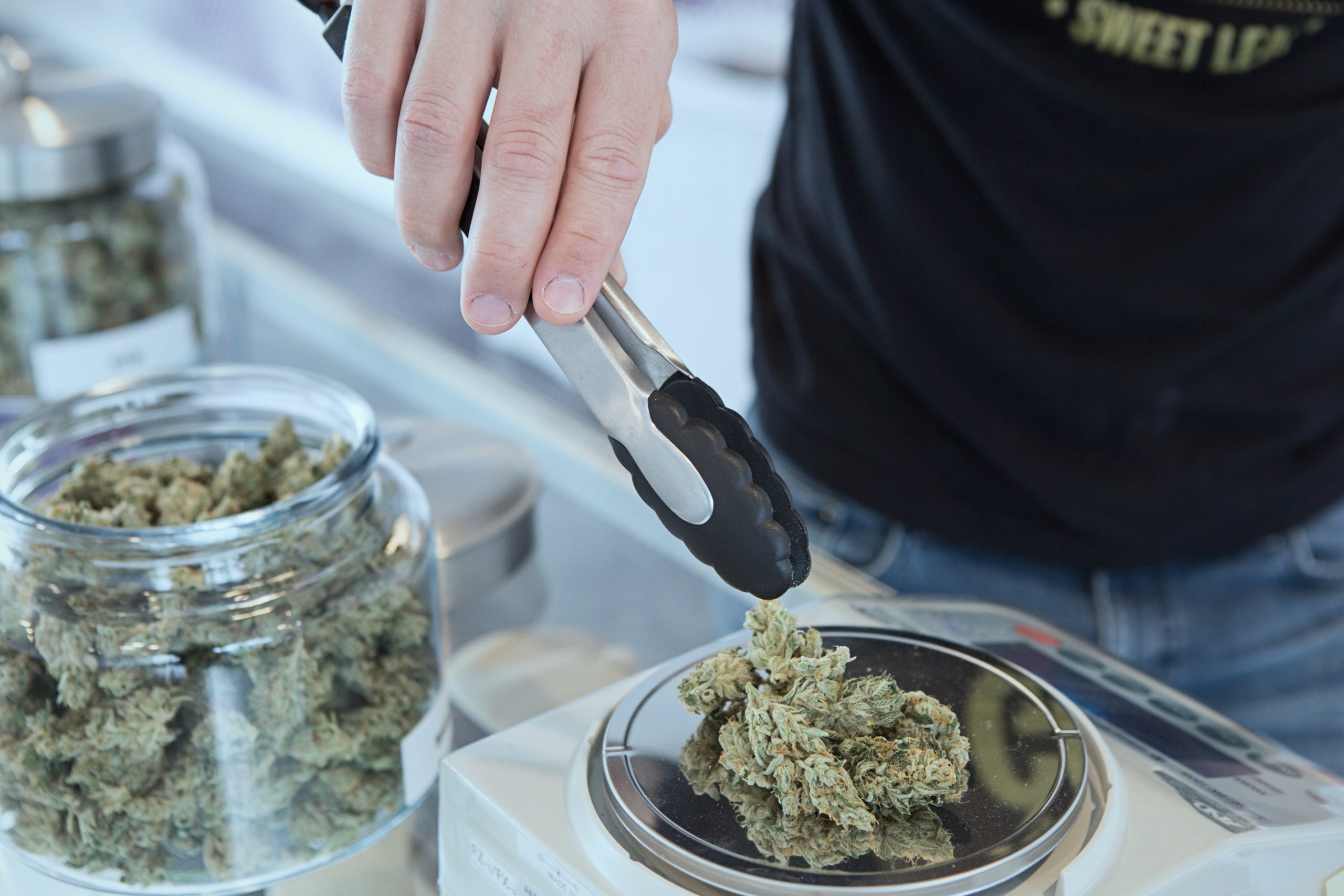Cannabinoids: What Are They and Where do They Come From?
What Are Cannabinoids?
Cannabinoids aren’t a drug as many would falsely believe, they are natural chemicals that are produced in the Cannabis plant and in your body. They interact with what is called the Endocannabinoid (or EC) system. This system determines how you feel, move, and react to the world. Like THC, these Cannabinoids interact with receptors throughout your body that regulate your body’s functions.
 CB1 and CB2 Receptors
CB1 and CB2 Receptors
According to research, there are at least two kinds of cannabinoid receptors in your body: CB1 and CB2. These receptors activate when they are “flooded” with cannabinoids after a person smokes, vapes, or otherwise ingests cannabis. Consuming cannabis in this way is only a supplement to the cannabinoids that are already naturally produced in your body. Discovered in the 90’s, CB1 and CB2 receptors were found to express themselves in different ways and are found in different places in the body.
CB1 receptors are found throughout the brain and the central nervous system, which is why the consumption of cannabis strains that are high in THC have such a powerful effect on things like pain, nausea, and depression. It is also why the psychoactive effect that is produced can be so strong. This effectiveness is extremely useful for those undergoing chemotherapy or for those suffering from conditions involving inflammation.
CB2 receptors are found throughout the immune system, like in the spleen, tonsils, and thymus gland. They can also be found in the brain, like CB1, but they are not as common there. Another area they can be found is in the gastrointestinal system. Here, they regulate inflammation, which is why sufferers of inflammatory conditions in the gastrointestinal system can find relief through cannabis use.
Keep in mind, CB1 and CB2 receptors are like fingerprints. They all express themselves in our bodies differently. Some people can be highly sensitive to THC because of “over-expressed” CB1 receptors. Others might have “under-expressed” CB2 receptors, which means they need to consume CBD in higher quantities for the therapeutic effects. There are no two people that are exactly alike.
Cannabinoid Classifications
- Phytocannabinoids are the ones that come from the most obvious place, the Cannabis plant.
- Endogenous Cannabinoids are the ones that your body naturally produces.
- Purified Cannabinoids are just that: purified. They are extracted from the Cannabis plant and made into products like Cannabidiol and THC.
- Synthetic Cannabinoids are made in a laboratory. They are not naturally occurring like the ones made in your body and in the Cannabis plant.
Medical Uses of Cannabinoids
The therapeutic uses of Cannabinoids have been under study ever since the discovery of the Endocannabinoid system in our bodies. In some ways, it seems like its uses are endless. They can relieve refractory spasticity (spasms) that happen to those who have multiple sclerosis and they can be used in the treatment  of anorexia, nausea, and neuropathic pain. Cannabis and cannabinoids are also useful in the treatment of pain for inflammatory conditions as well as any chemotherapy-related pains. Mental health issues, such as depression, may also be treatable with
of anorexia, nausea, and neuropathic pain. Cannabis and cannabinoids are also useful in the treatment of pain for inflammatory conditions as well as any chemotherapy-related pains. Mental health issues, such as depression, may also be treatable with
cannabinoids. There are side effects, of course, but they are nothing compared to the terrifying side effects of other prescription drugs that are used. The most a person who uses Cannabinoids would have to worry about is tiredness, dizziness, some psychological effects, and dry mouth. To top it all off, withdrawals are rarely an issue.
Clinical trials are essential in helping us better understand the effects of cannabis, more specifically cannabinoids, on the mind and body. They give us a platform to explore the effectiveness of cannabis as a medical treatment, the short- and long-term effects, as well as the best ways to consume or inhale cannabis.
Cannabis & Clinical Trials – The Process and Importance
Before diving into the process and importance of clinical trials related to cannabis, we must first understand what a clinical trial is.
A clinical trial is a biomedical and behavioral research done on participants. A clinical trial may consist of just observing participants or a series of experiments. They help us understand the safety and effectiveness of different treatments, especially in medicine. This research is often conducted by doctors, professors, students, and other qualified individuals. Starting a clinical research trial is a matter of funding, putting together the right team of people, and gathering willing participants.
Clinical trials researching cannabis have the same goal. They aim to further our understanding of the safety and effectiveness of cannabis as an outlet for medical treatment.
This research is also an essential part of the movement to legalize both medical and recreational cannabis use. Currently, cannabis is unjustly classified as a Schedule I drug by the DEA. While this classification has made it even more difficult to legalize cannabis, this classification hasn’t stopped states throughout the nation. Moving forward with more studies and learning more information about cannabinoids’ medical benefits may correct cannabis’ unwarranted position as a Schedule I drug and encourage other states to legalize it, as well.
Further research also helps us decide the safest and most effective way to consume or inhale cannabis. Studies have shown advantages to vaporizing cannabis as opposed to smoking it. It is generally perceived that vaporizing cannabis is a safer form of inhaling it, as fewer carcinogens are released. These participants also favored the taste, smell, and the discrete nature of vaporizing cannabis.
Clinical research on cannabis gives us insight on just how cannabinoids affect us on a biological level, the best way to consume or inhale cannabis, and how effective the plant really is as a medicine. Further research may also prompt the DEA to schedule cannabis appropriately, based on factual information opposed to fear-mongering. This could also lead to more states legalizing both medical and recreational cannabis use.
Cannabinoids: What Are They and Where do They Come From?
About Cannin: Cannabis and Hemp Investment Experts
Market analysts expect the cannabis and hemp industry will have an annual value exceeding $75 Billion in the next decade. The time to invest in cannabis and hemp stocks is now! Are you looking to buy stock in hemp companies or cannabis companies? Interested in emerging penny pot stock companies? Looking for the best Canadian pot company to invest in? Cannin is your trusted resource for information about Cannabis and Hemp stock investment opportunities. Our global team of experts evaluates emerging cannabis stock investing companies. We aggregate hundreds of hours of research and distill it down to make it easy for our investors to understand. We provide tips on the best cannabis and hemp stock investments for 2020. We provide the latest hemp investment news and analysis. Visit our site for cannabis investing news and featured companies, sign up for the free Cannin Chronicle or get a free trial of our smart cannabis and hemp stock algorithm to take the guesswork out of profiting from this exciting industry. Predict the price of cannabis and hemp stocks hours in advance with our machine learning algorithm. Is it too late to invest in marijuana? No! This is the perfect time.
Profit from the best Cannabis and Hemp stocks – we’ll show you how at cannin.com

